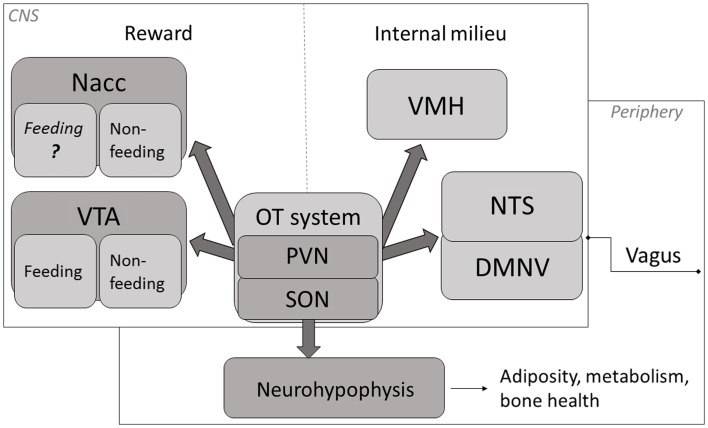Figure 1.
A schematic representation of key mechanisms through which OT affects appetite. OT neuronal activity has been associated with termination of food intake (84–87). The magnitude of this response is modified by the integrated peripheral signals (mediated largely via the vagus and the brainstem relay circuit) and by the rewarding value of a meal (74, 84, 88, 89). Release of OT in the CNS promotes termination of consumption when internal milieu is jeopardized (energy imbalance, abnormal GI and/or osmotic parameters) as well as part of intricate reward processing. Neurohypophyseal OT participates in the regulation of mechanisms related to metabolism, adiposity and bone tissue status. Nacc, nucleus accumbens; VTA, ventral tegmental area; PVN, paraventricular nucleus; SON, supraoptic nucleus; VMH, ventromedial hypothalamus; NTS, nucleus of the solitary tract; DMNV, dorsal motor nucleus of the vagus.

